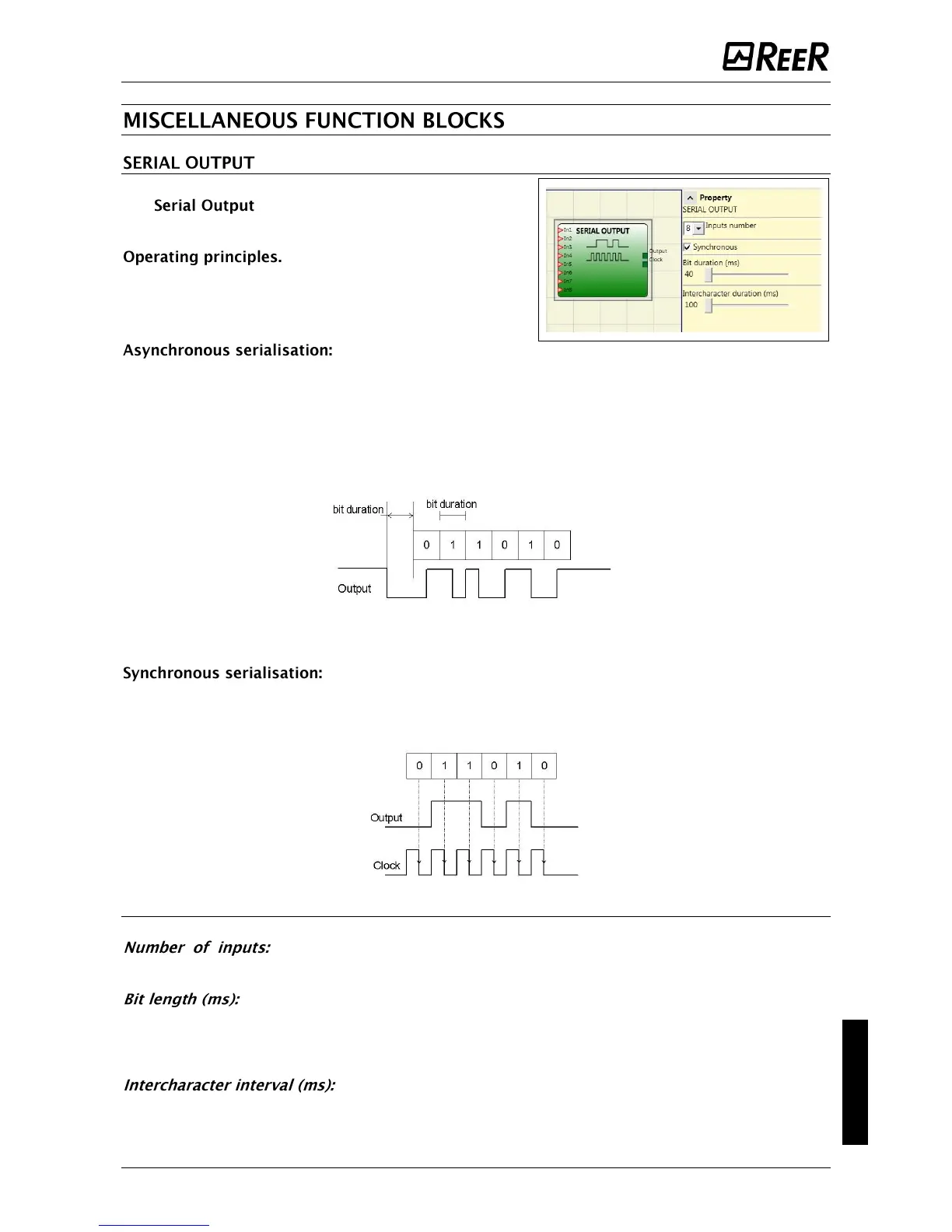The operator outputs the status of up to 8
inputs, serialising the information.
This operator outputs the status of all the connected
inputs in two different ways:
1) The status of the line in the idle condition is 1 (TRUE);
2) The start data transmission signal is 1 bit = (FASLE);
3) Transmission of n bits with the status of the connected inputs encoded using the Manchester
method:
- Status 0: rising edge of the signal at the centre of the bit
- Status 1: falling edge of the signal at the centre of the bit
4) Intercharacter interval is 1 (TRUE) to allow synchronisation of an external device.
Therefore, with the Asynchronous method the Clock output is not present.
1) The output and the clock in the idle condition are 0 (FASLE);
2) Transmission of n bits with the input status using OUTPUT as data, CLOCK as the timing base;
3) Intercharacter interval is 0 (FALSE) to allow synchronisation of an external device.
Parameters
Defines the number of inputs of the function block, which may be 2÷8
(asynchronous) or 3÷8 (synchronous).
Enter the value corresponding to the length of each single bit (input n) in the
pulse train that makes up the transmission.
- 40 ms ÷ 200 ms (Step 10 ms)
- 250 ms ÷ 0.95 s (Step 50 ms)
Enter the time that must pass between the transmission of one pulse
train and the next.
- 100 ms ÷ 2.5 s (Step 100 ms)
- 3 s ÷ 6 s (Step 500 ms)

